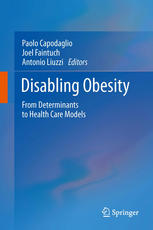

Most ebook files are in PDF format, so you can easily read them using various software such as Foxit Reader or directly on the Google Chrome browser.
Some ebook files are released by publishers in other formats such as .awz, .mobi, .epub, .fb2, etc. You may need to install specific software to read these formats on mobile/PC, such as Calibre.
Please read the tutorial at this link: https://ebookbell.com/faq
We offer FREE conversion to the popular formats you request; however, this may take some time. Therefore, right after payment, please email us, and we will try to provide the service as quickly as possible.
For some exceptional file formats or broken links (if any), please refrain from opening any disputes. Instead, email us first, and we will try to assist within a maximum of 6 hours.
EbookBell Team

4.3
98 reviewsObesity is currently regarded as one of the major health challenges of the developed world. Excess body weight is an important risk factor for morbidity and mortality from cardiovascular diseases, diabetes, cancer, musculoskeletal disorders and even psychiatric problems and is estimated to cause nearly 3 million deaths per year worldwide. Obesity is not necessarily associated with comorbidities: there are indeed metabolically healthy obese individuals. Thus, we need to consider individuals presenting simple with obesity separately from those at risk of developing or who have already developed complex clinical states potentially leading to disability. Comorbidities can tip the balance of independence in patients who already have functional limitations mainly due to the excess of mass itself or who develop conditions such as diabetes, cardiovascular conditions, non-alcoholic fatty liver disease, where an abnormal metabolism of adipose tissue prevails. Morbid obesity with comorbidities leading to disability represents a real social and economic burden for National Health Systems worldwide. The presence of multiple and associated comorbidities often represents an obstacle to being admitted to hospitals for the treatment of metabolic diseases. On the other hand, clinical units with optimal standards for the treatment of pathological conditions in normal-weight patients are often structurally and technologically inadequate for the care of patients with extreme obesity. The aim of this book is to focus on the pathophysiological and rehabilitative aspects of disabling obesity, highlighting multidisciplinary rehabilitation interventions as key to counteracting the disabling aspects of complicated obesity.